Rolex GMT 6542 ALBINO-
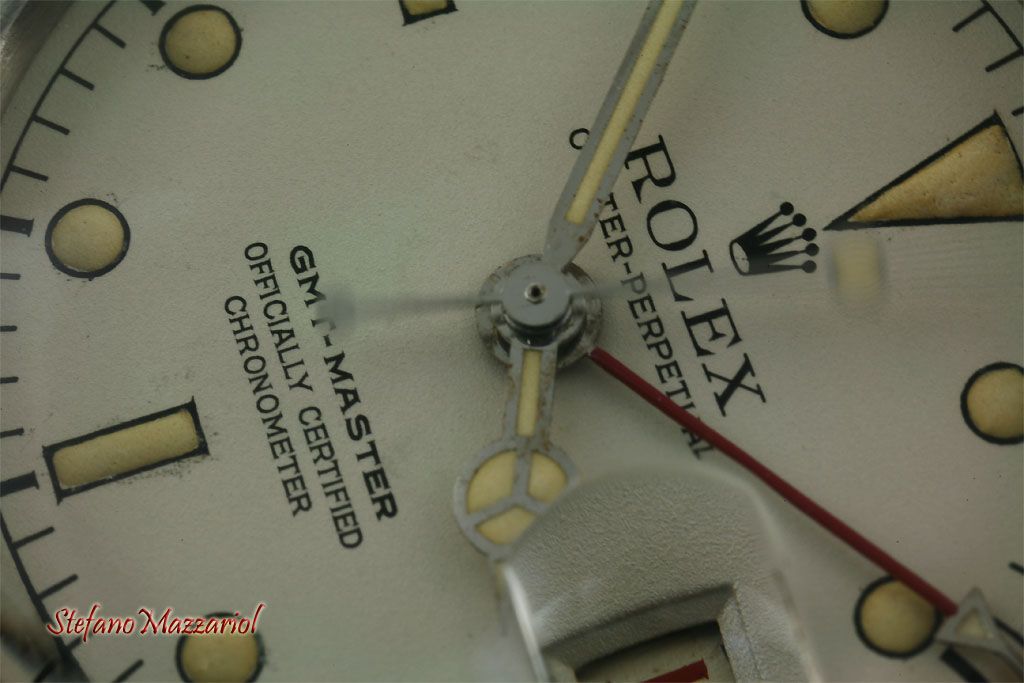
Il nome GMT -Master fu registrato da Rolex il 21 /04/1955 e subito commercializzato nei 4 anni successivi.
Durante gli anni di produzione, vennero effettuate molte e continue modifiche riguardanti il movimento , le incisioni , le corone di carica, le lancette e anche le tipologie dei quadranti.
Normalmente i quadranti di questa referenza dedicati alla versione in acciaio venivano prodotti con la tecnica definita "GALVANICA".
The name GMT – Master was registered by Rolex on April 21, 1955 and immediately after commercialised during the following 4 years.
During the production years many and continuing modifications and adjustments were made regarding the mechanism, Engravings, winding crowns, hands and dials Variations. Usually the dials
dedicated to this reference Were stainless steel produced with the "galvanic" procedures.
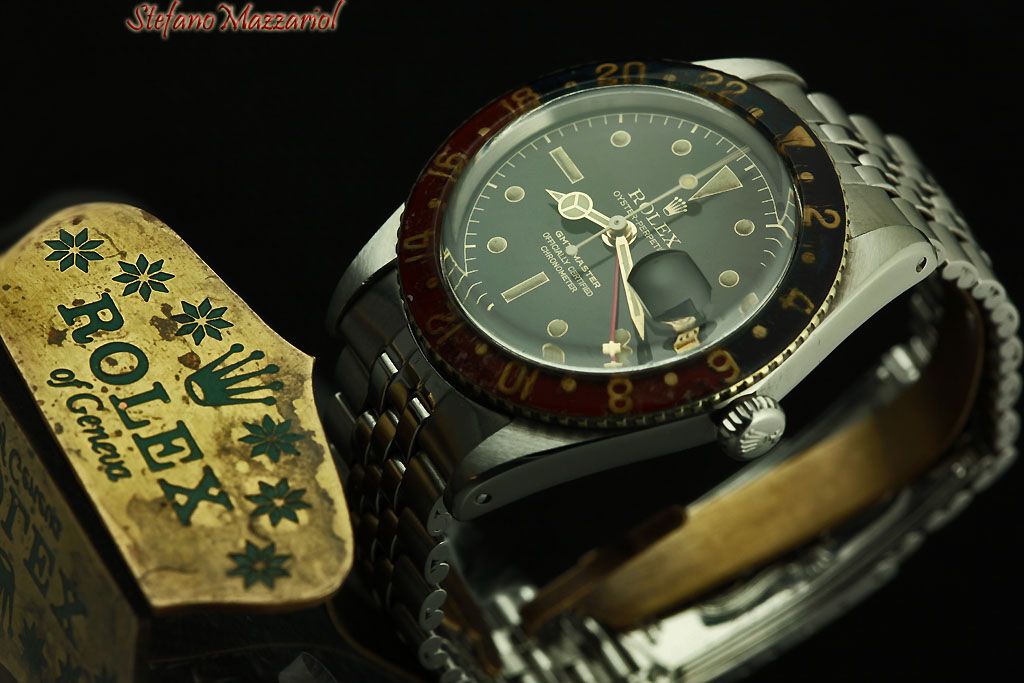
In short, the basis of the face was immersed in a plating bath of the browning and the next step with a swab was rolled out the "DECAL" or "TRANSFER" to the writing and all that we wanted to stay golden.
The dial and was subsequently re-plated for the color black, which obviously adhered everywhere except on the Decal. How
finish, to give the shiny "mirror" was sprayed un sottile strato trasparente chiamato ZAPON e infine, come ultima fase, l’applicazione della materia luminosa.
Briefly, the dial plate was immersed in a golden galvanic solution, in the next step with the help of a tampon pad was positioned a “DECAL” or “TRANSFER” for graphics and everything which had to remain in gold.
After that, the dial was again immersed in a black galvanic solution, which covers everything except on the Decal.
At the end, to obtain a mirror glossy finishing, a very thin transparent paint, called ZAPON, was applied and, as last step, the luminous material was positioned.
Questo per i quadranti universalmente conosciuti; ma da sempre veleggiava the "Legend of the GMT blank
Everyone has heard about it but nobody has ever seen.
There 's some say it was somehow tied to the historic airline-Pan Am (Pan American Airways), which had the logo white field, but frankly I do not and 'data to determine whether it is true story.
All the above Known universally for the dials, But The Legend of the White Was Already GMT alive.
Everybody heard about that, But has never seen anybody com.
Somebody Said There Was a connection with the world famous airline company Pan-Am (Pan American Airways), Which Had the logo white as dominant color, But honestly, I can not confirm if this correlation is a truth.
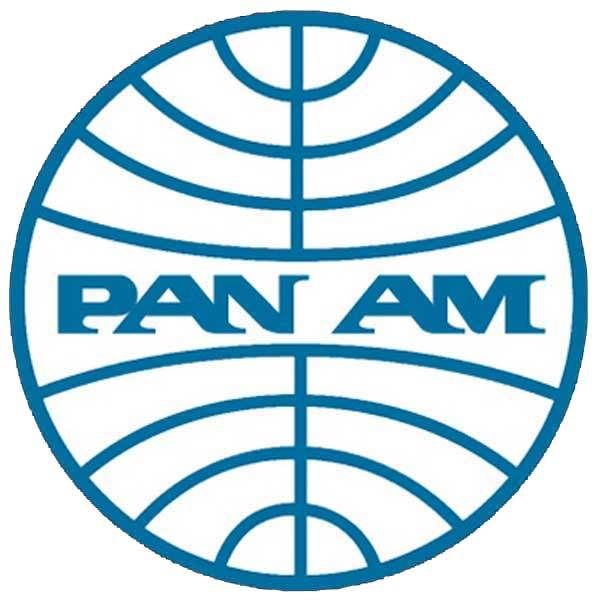
What is certain is that there are of this reference, no less than 5 different quadrants Gilt: GMT MASTER with the words in red, with the writing and depth ', with large buckshot buckshot and small version glossy silver ...
All legends always hide a kernel of truth ', and as tradition has it, I have the pleasure, during my research on the world of watches vintage come across in a Rolex GMT-Master ref. 6542 produced in 1958 with a white face.
What Is Certain, of this reference not less than 5 different guilt Variations: GMT - MASTER in red, with the graphics and the depth, luminous dots big and small luminous dots, glossy silver version…
As all legends hide a little truth and, unexpectedly I had the pleasure, during my researches in the vintage watches world, to hit with a Rolex GMT – MASTER ref. 6542 produced in 1958 with the WHITE DIAL.
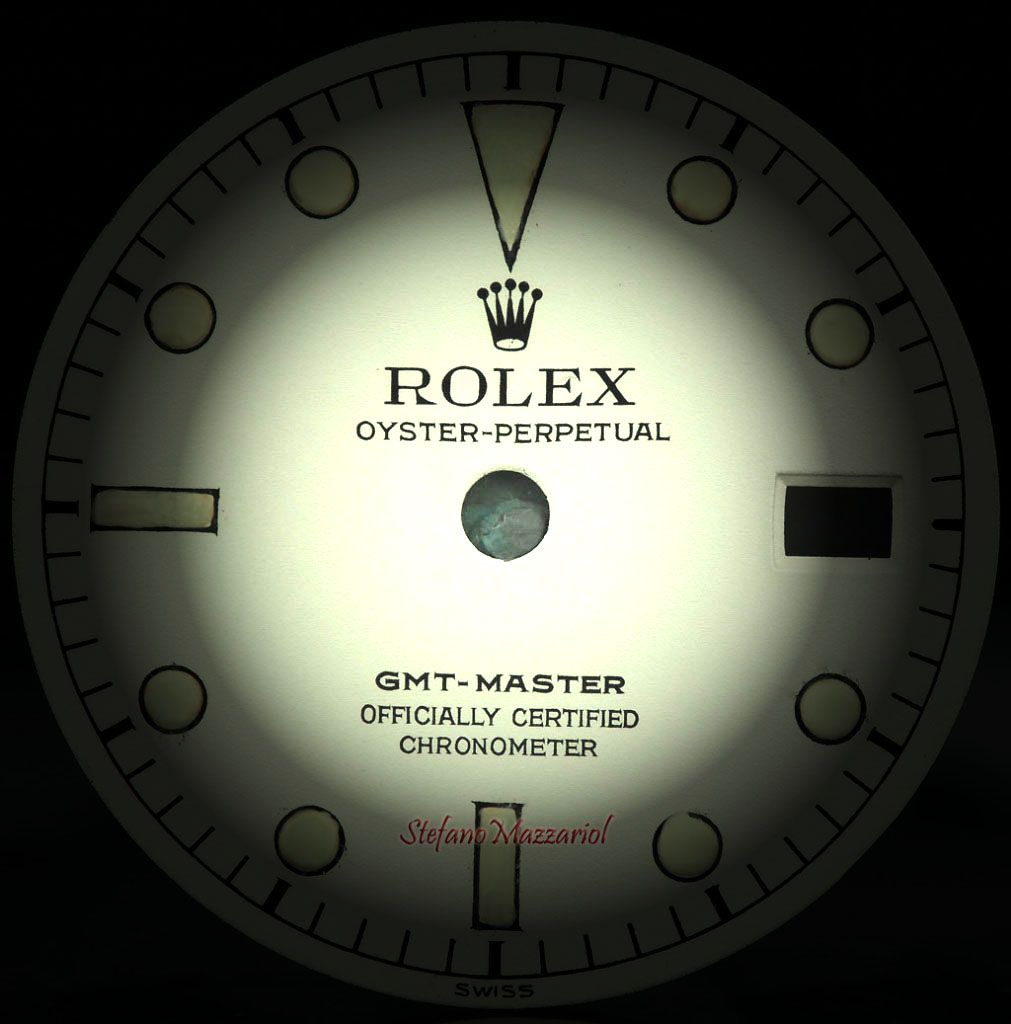

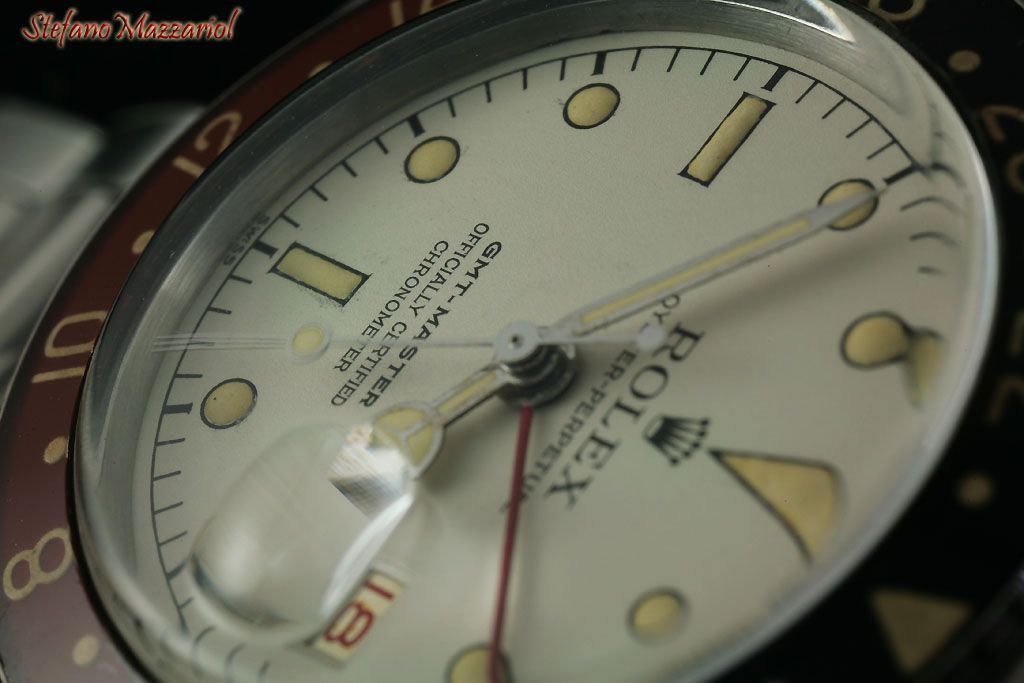
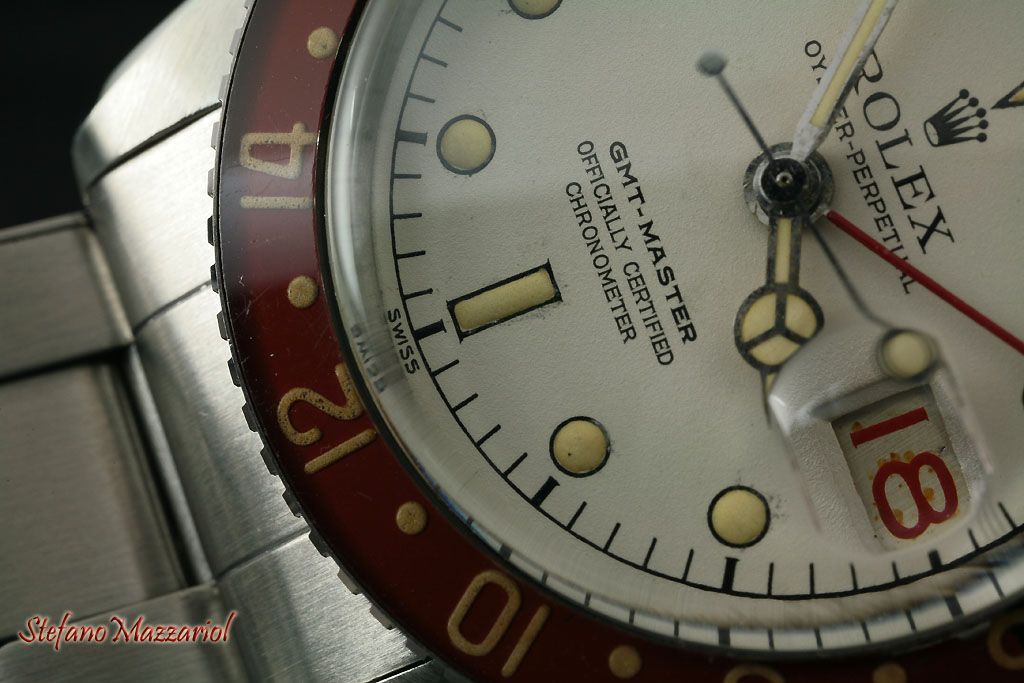


A differenza degli esemplari galvanici sopra citati , questo quadrante bianco e' stato realizzato con la tecnica di TAMPOGRAFIA.
La stampa a tampone o stampa tampografica (in inglese Pad_printing) è un procedimento di stampa indiretto or offset printing, which lets you play, simply and with high fidelity and resolution, drawings, writings and designs on both flat or on concave, convex or otherwise irregular.
basically could be described as a system that allows you to transfer images and graphics objects on 2D and 3D surfaces. Using a soft, flexible pad (usually silicon) a film of indelible ink is transferred from an engraved plate (intaglio plates) on the surface of the substrate.
The printing surface can also be non-planar but thanks to the soft pad printing can easily adapt to different forms on which it is pressed.
The pad allows you to print with a definition in all respects similar to the best-known screen printing, enabling the reproduction of the finest lines with clarity, even with more colors and printing "wet on wet".
Everything can be summarized in five points: 1
. On a plate, usually metal, is engraved image, and the plate is mounted on the pad printing machine.
2. The surface of the plate is inked and then cleaned of excess ink.
3. Buffer (now in silicone rubber) is pressed against the cliche and "collect" the ink "shaped".
4. The swab is placed on the object to be printed being pressed up against it to adhere perfectly adapting to the surface.
5. The swab is removed from releasing the ink on the surface of the same. This is a simplified
is like the dials were made of past and present operations are all done by hand.
Obviously, the graphics made on different surfaces and with different techniques leads to apparently different results.
With careful observation we can compare the graphics used in the cliche 'and find the similarities propio in similar defects to establish the originality'. Unlike the above Mentioned
galvanic dials, this white dial Was Realized with the pad printing method.
The pad printing is not direct offset print, Which Allows to reproduce in a not complicated way, but in high resolution, pictures, graphics and decorations, both in flat surfaces and concave, convex and in any case irregular ones.
Basically it is a system that allows to transfer images and graphics 2D on 3D items and surfaces. With a flexible and soft tampon (generally made in silicon) a small indelible ink is transferred on a metal place (copperplate cliché) directly on the surface.
This surface could also be not flat, but using the soft tampon is possible to adapt it to not regular surfaces .
The copperplate allows to obtain a very high definition print, very similar to the silkscreen, it is a very sharp definition method, in multicolour if needed, also with a “wet on wet” system.
We can resume the above in 5 main points:
1. An image is engraved on a metal made cliché, in the pad printing machine.
2. An indelible ink is put on the cliché surface, carefully cleaning the exceeding ink,.
3. A tampon (today made in silicon) is pressed on the cliché to fill the “shaped” ink.
4. The tampon is positioned on the item to be printed, until it joins perfectly the surface.
5. Removing the tampon, the item is printed.
This in a short exemplificative description is how the dials were and are today handmade.
Obviously, the graphic results are different depending on the different surfaces.
We can confirm the full dial originality comparing the small defects and Variations Among different clichés.
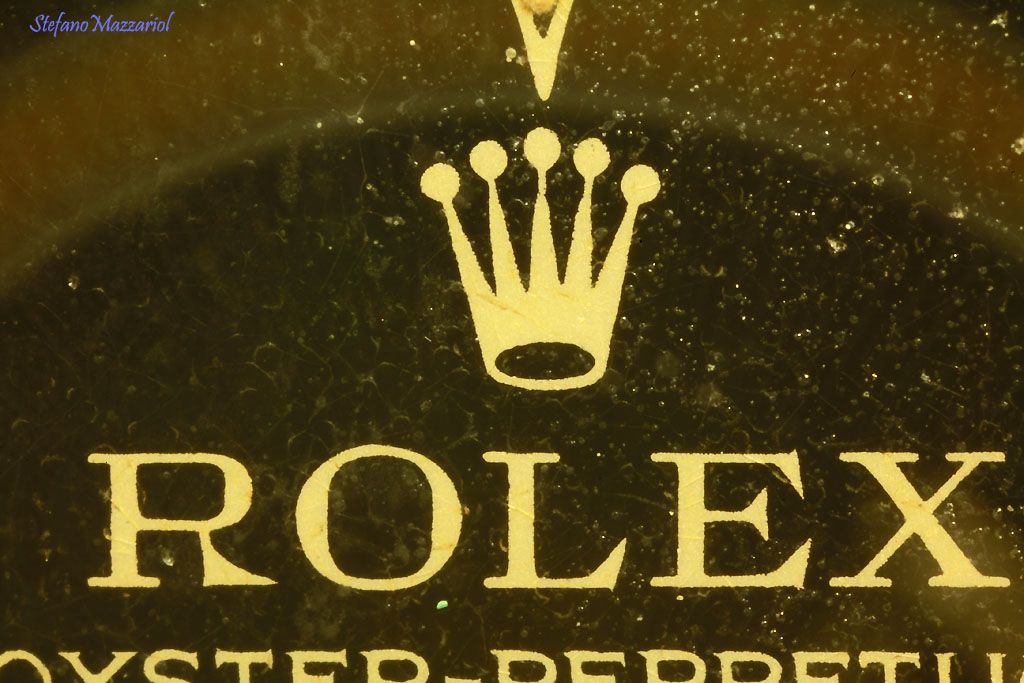


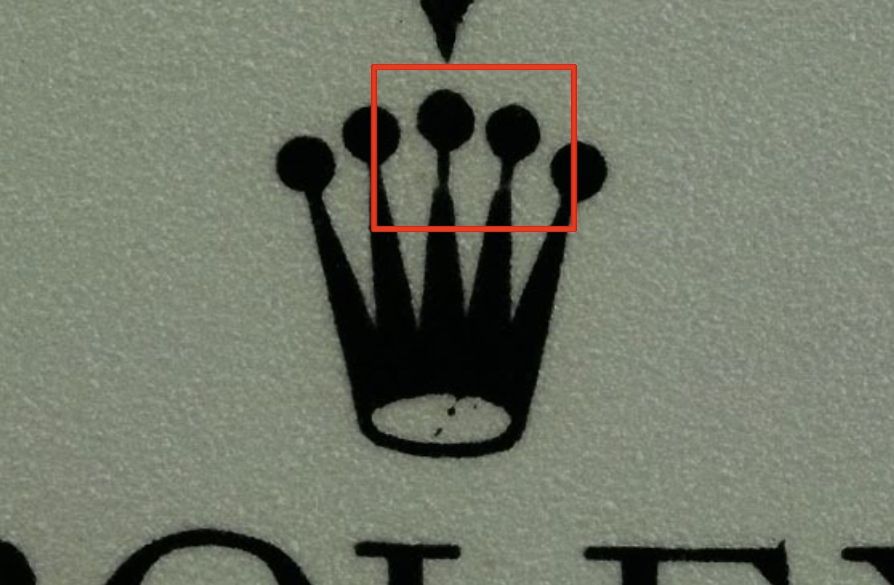
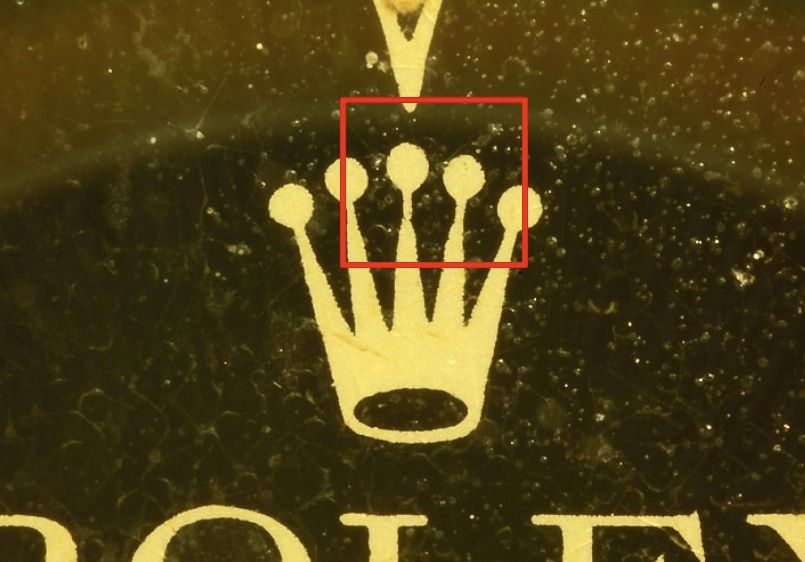

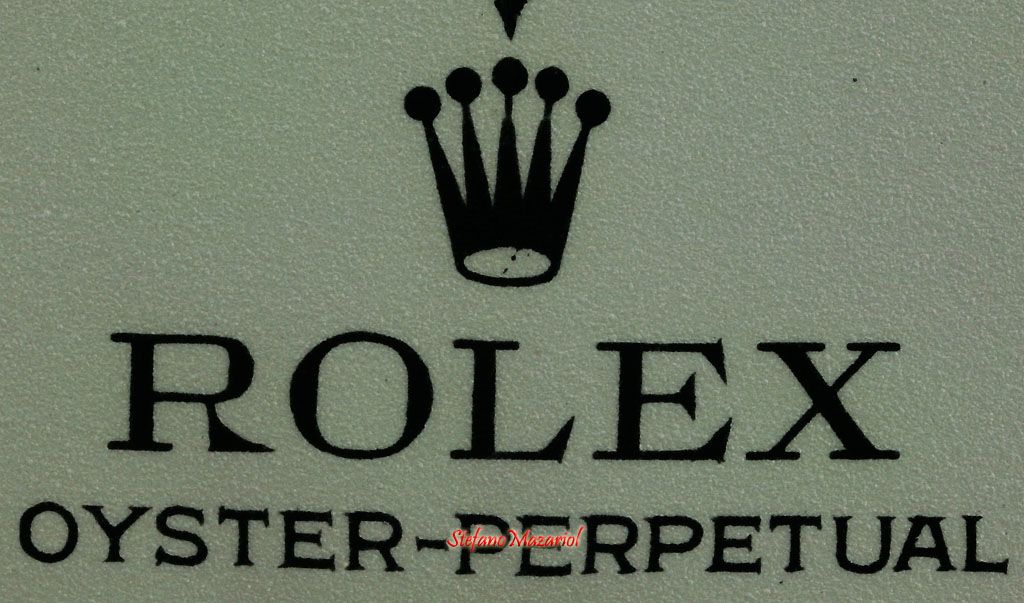



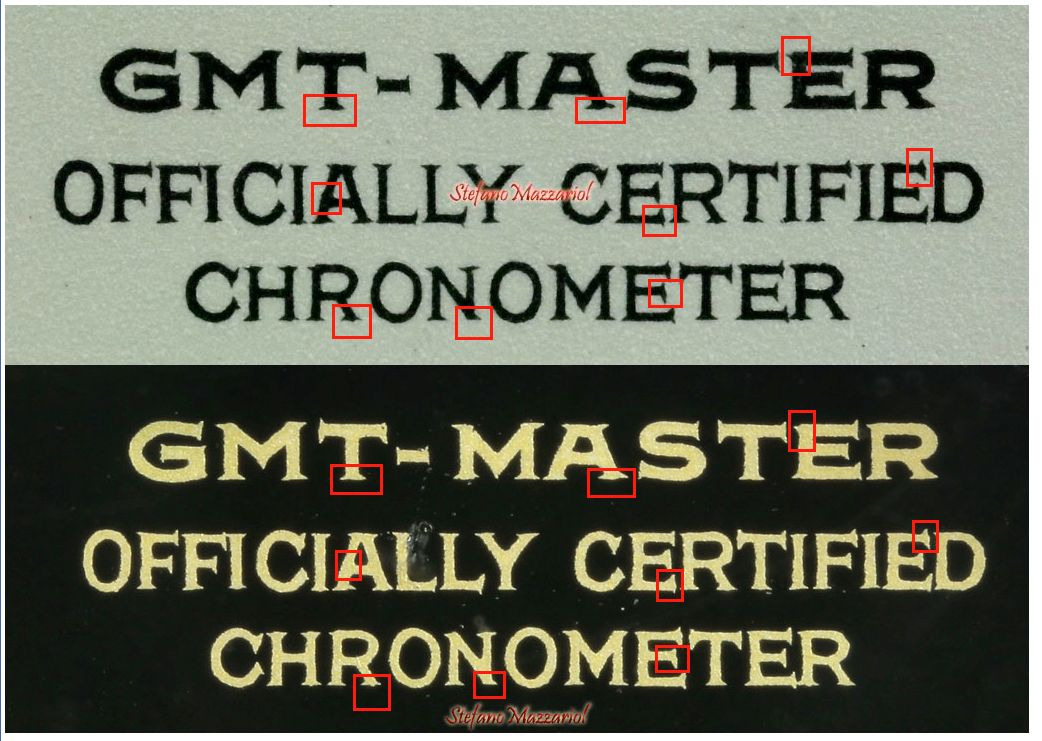
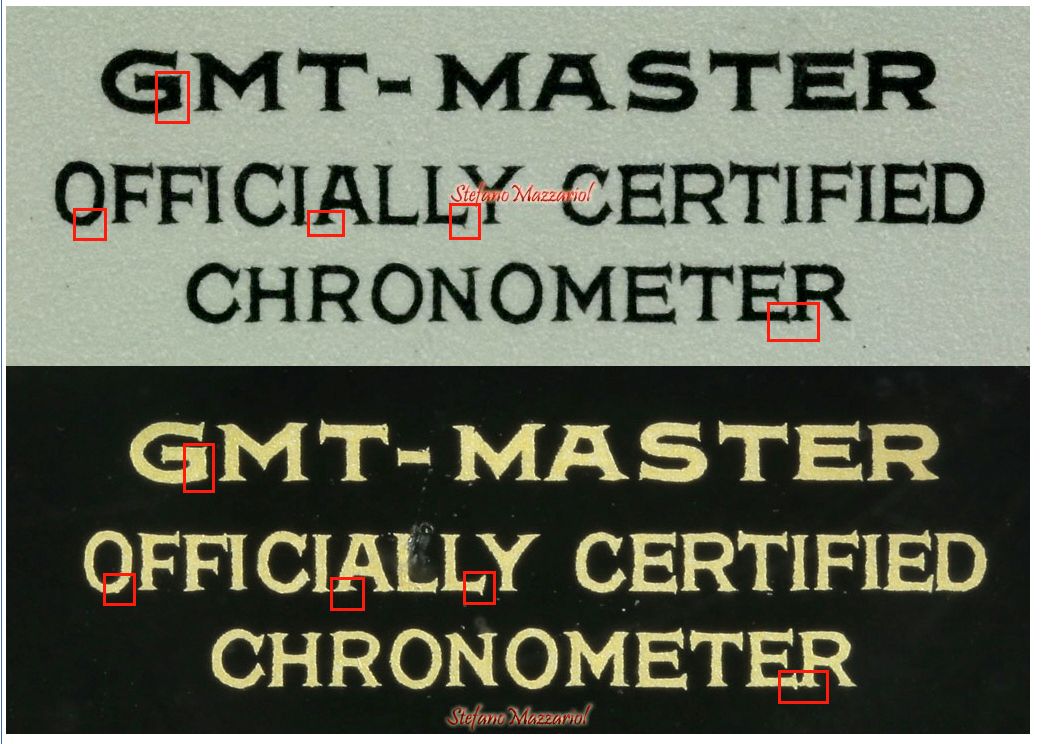
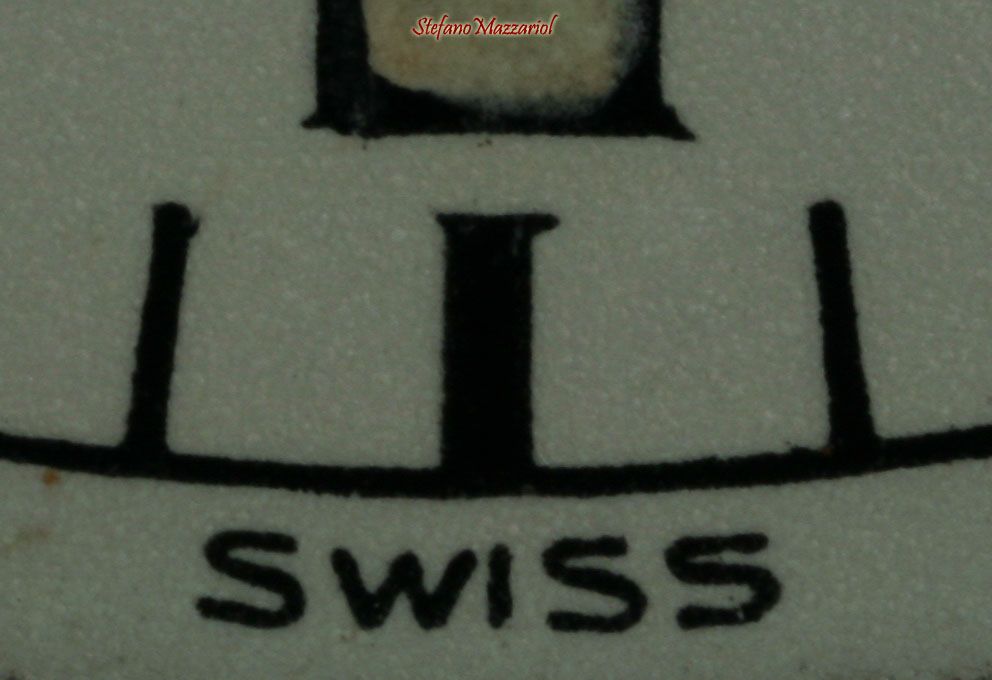
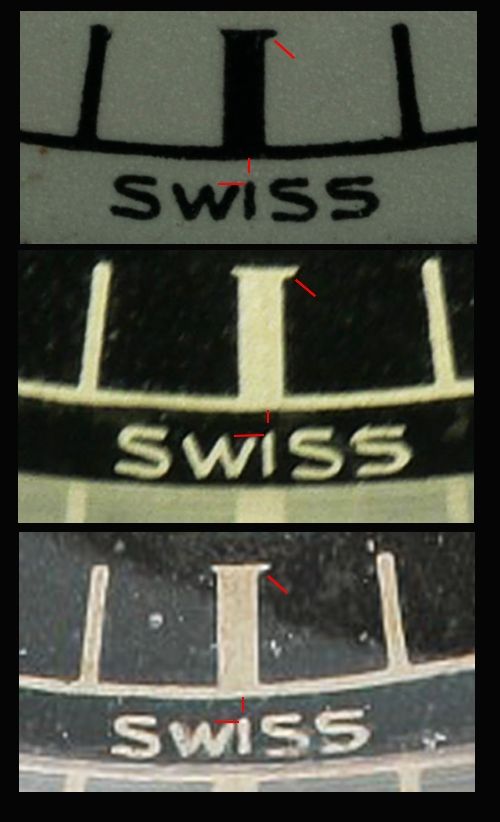
be emphasized that the cliches used in one of the latest versions of the quadrants Gilt has basically the exact same graphics used to make the dial "ALBINO" illustrated in this article.
As so often the little "flaws" questions (see the imperfection of the crown logo, the design characteristics of the writing, etc. ..) can help us confirm the indisputable originality.
Please, note the cliches used in one of the last version of the guilt is Substantially The Same dials used to Realize the "ALBINO" dial illustrated here.
As always, the usual small "defects" (eg the small flaw on the crown logo, the graphics on the Engravings ...) help us to confirm the indisputable Originality of this piece.
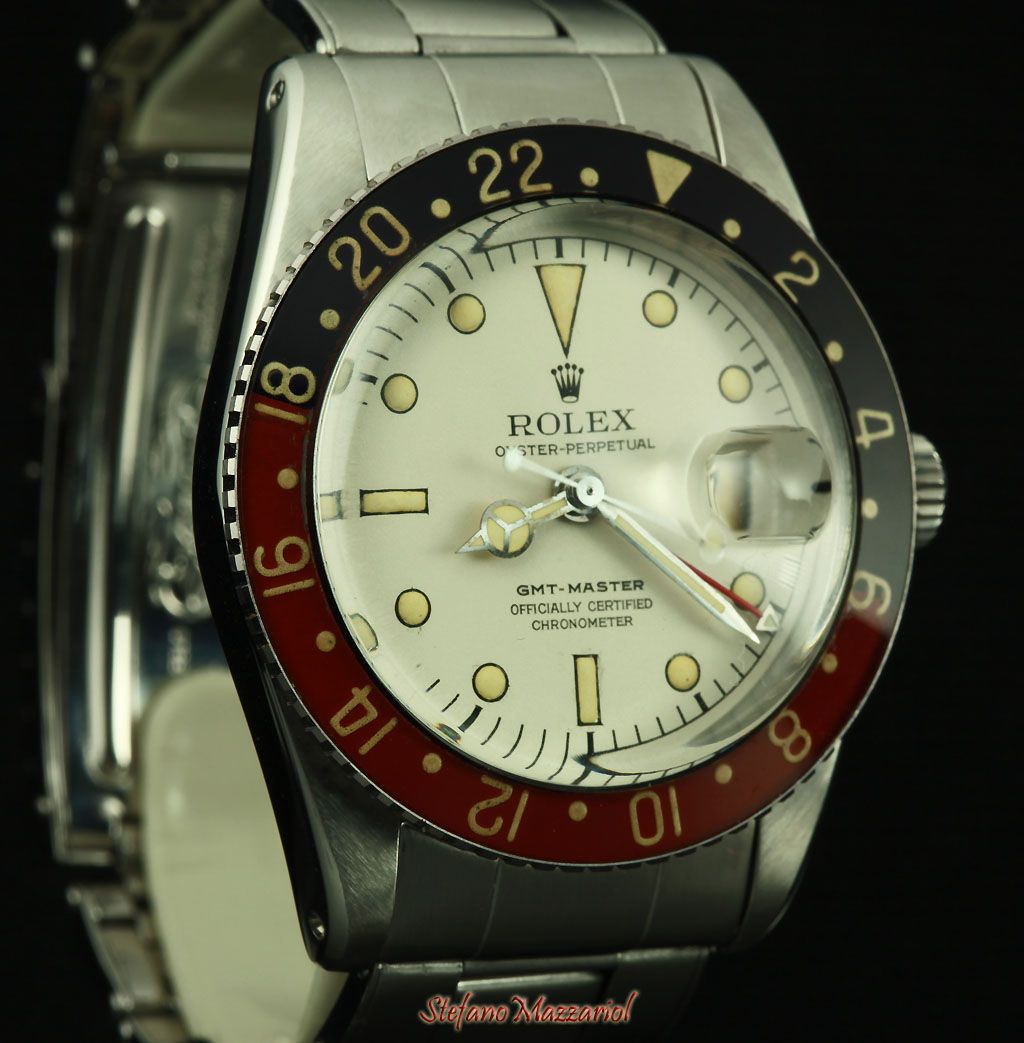
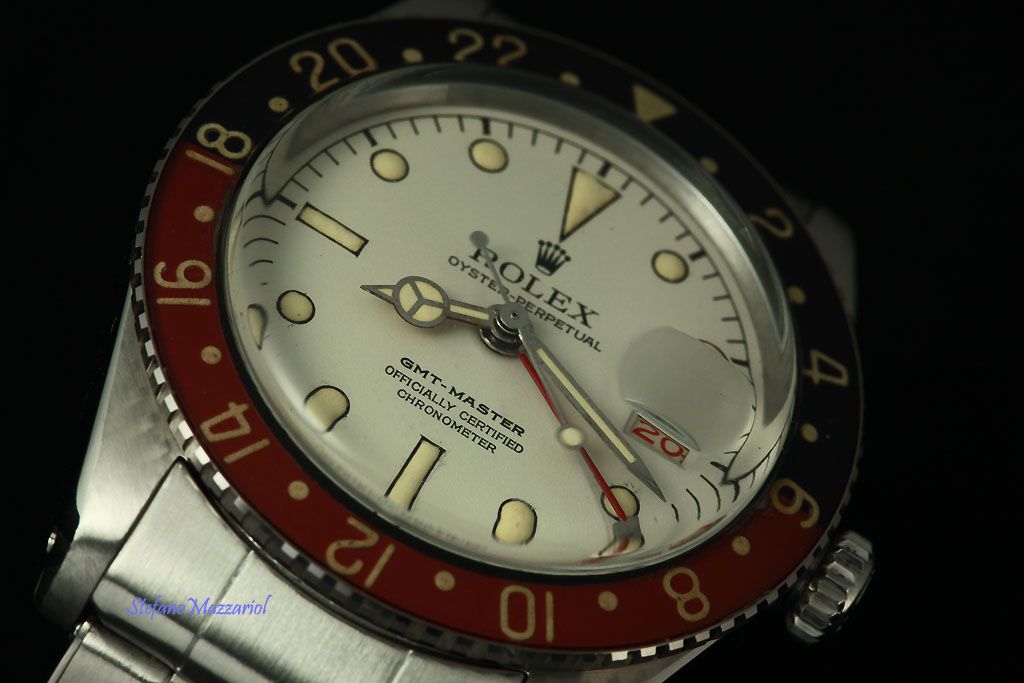






The whole framed by a bezel original "Bakelite" in the best condition that ever I seen. Surrounded By Everything
an original bezel in "Bakelite" Conditions in the best I have ever seen.
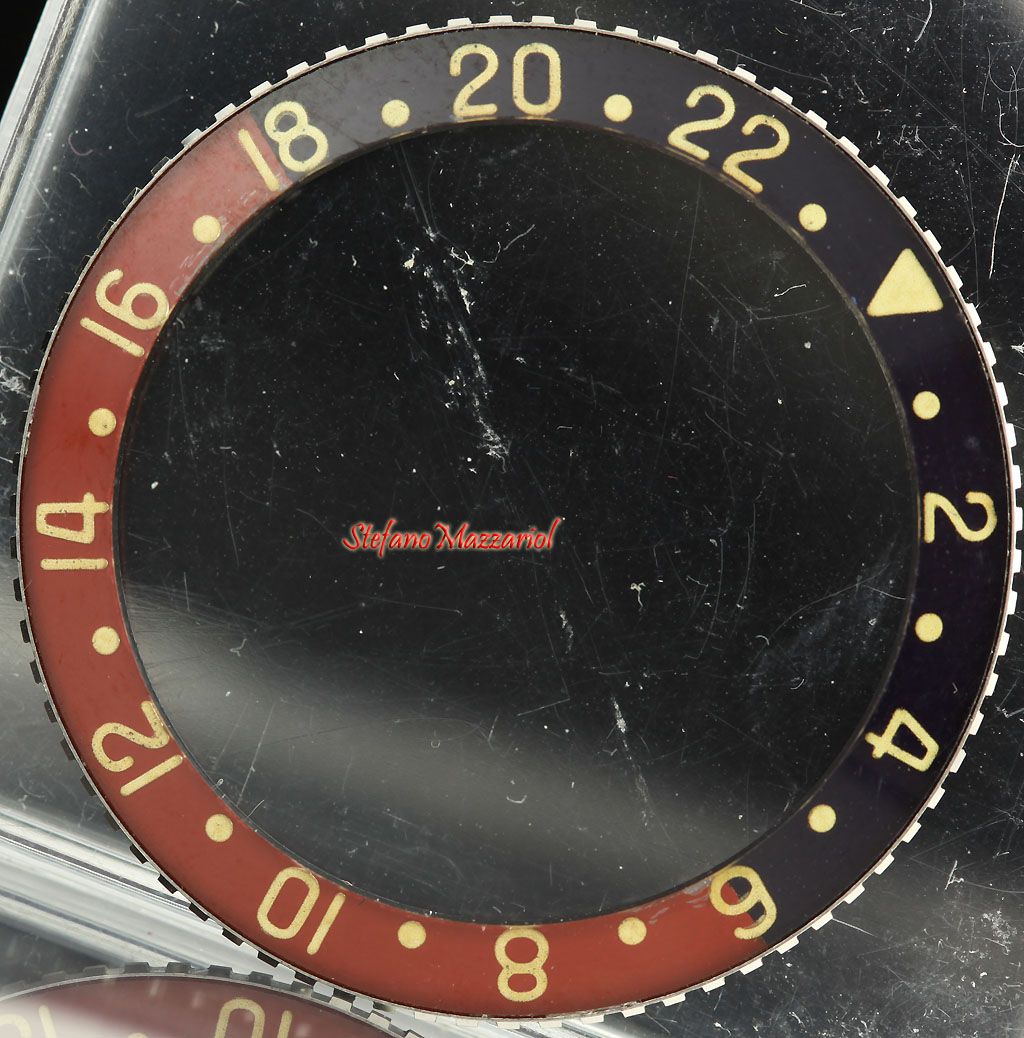
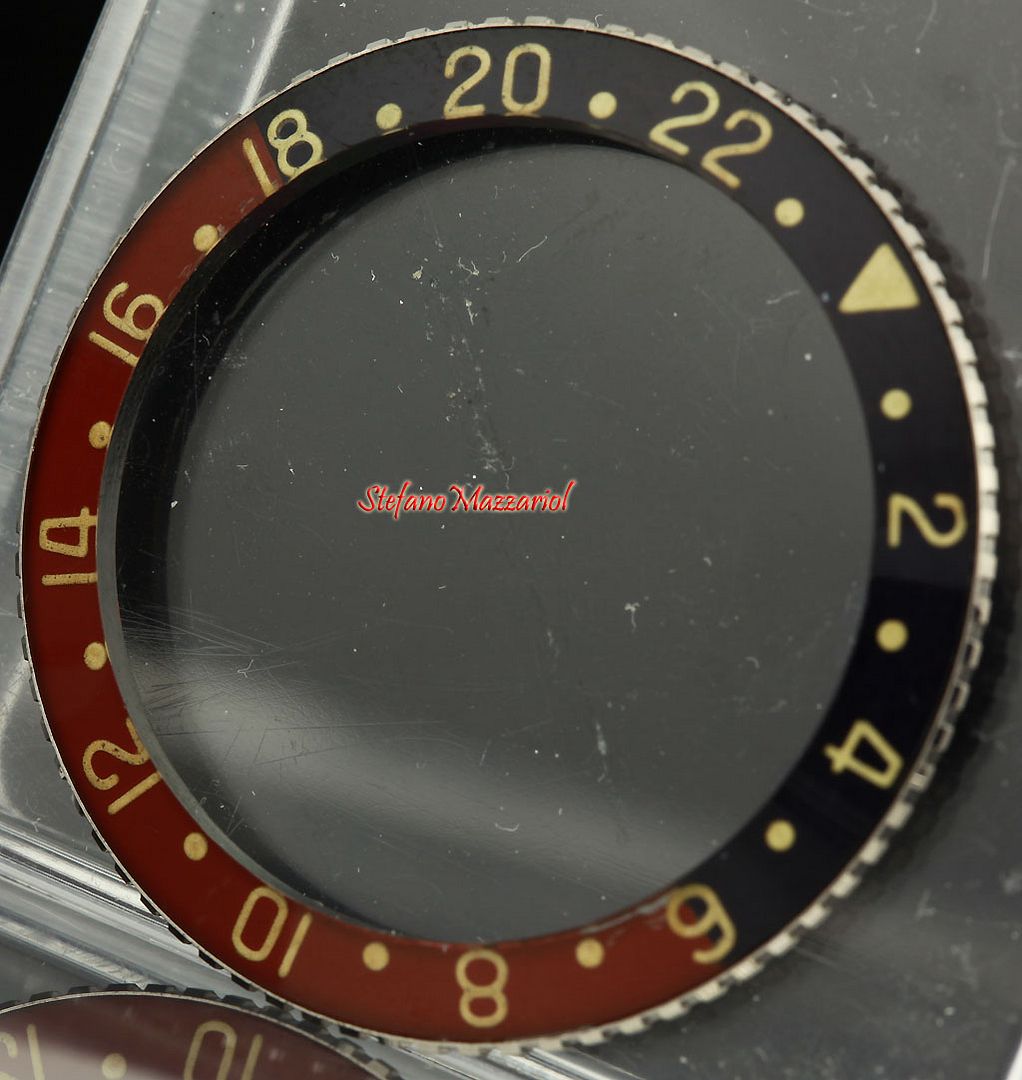
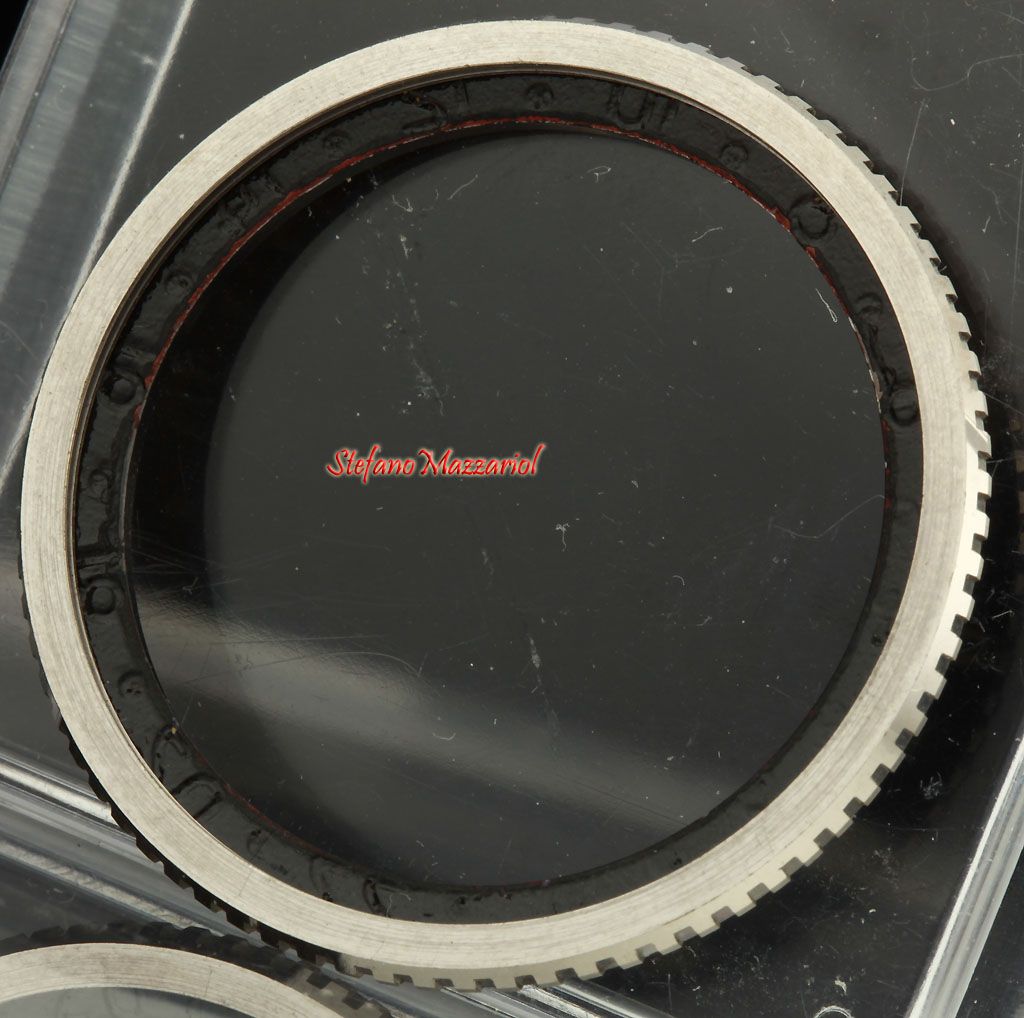





E' francamente emozionante vedere ciò che per molti era considerato solo una leggenda ora nelle mie mani .
E' quindi con estremo piacere che presento e condivido con Voi, senza timore di smentita, uno dei rarissimi Rolex GMT - Master referenza 6542 "ALBINO" .
It is really exciting for me to have in my hands what for everybody was just a legend.
It is my great pleasure and I m proud to introduce and share with you, without any doubt and fear of contradiction, one of the rarest original Rolex GMT – MASTER reference 6542 “ALBINO”.
Stefano Mazzariol.

0 comments:
Post a Comment